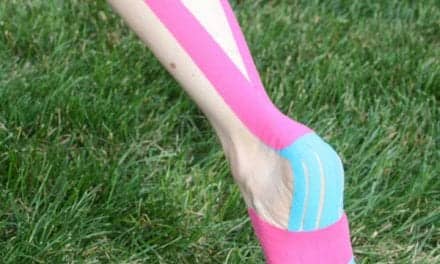Wearables is the #1 fitness trend for 2023, according to survey results published in the January/February issue of ACSM’s Health & Fitness Journal, published by the American College of Sports Medicine. Technology continues to impact the fitness industry, according to the international survey of fitness trends from more than 4,500 health and fitness pros.
“As we enter 2023, the results of this year’s survey could also very well be titled ‘post-pandemic recovery impacts the fitness industry’ or ‘what happened to online training and home gyms?’,” adds Dr. Thompson.
ACSM’s annual survey of fitness trends helps the global health and fitness industry make critical programming and business decisions that ultimately affect consumers. This year’s survey assessed 42 potential trends with the top 20 described in the report.
In 2020, online training came in at No. 26. In 2021, it was the No. 1 trend. In 2022 it dropped to No. 9, and in the 2023 results it fell to No. 21. Clearly seeing this trend drop so significantly ties back to the fact that individuals are returning to the gym and in many cases abandoning their home gyms.
Fitness facilities also seem to be returning to the basics in a more post-pandemic world: Strength Training with Free Weights was No. 2, Body Weight Training took the No. 3 spot, and Core Training and Circuit Training ranked Nos. 11 and 12, respectively.
Other trends have remained relatively stable, regardless of the changes brought by COVID-19: High-Intensity Interval Training (HIIT), for example, was the No. 1 trend in both 2014 and 2018, and it took the No. 7 slot in 2022 and 2023.
Fitness Programs for Older Adults experienced fluctuations that seemed to be caused both by the pandemic and other external factors including the fact that many Baby Boomers are entering retirement and adopting a lifestyle that focuses on fitness. This trend was No. 9 in 2018, No. 4 for 2019, No. 8 in 2020, No. 9 again in 2021, No. 11 in 2022, and moving up to the No. 4 slot in 2023.
- Wearable Technology. Think fitness trackers, smart watches, heart rate monitors, and GPS tracking devices, including tech that can monitor heart rate, calories, sitting time, sleep and more.
- Strength Training with Free Weights. This activity incorporates the use of barbells, dumbbells and/or kettlebells.
- Body Weight Training. Predictably, techniques that focus on body weight as the primary resistance. Body weight training uses minimal equipment and space, making it an inexpensive and functional way to exercise.
- Fitness Programs for Older Adults. Programming focused on the aging population and its unique needs.
- Functional Fitness Training. Training to improve balance, coordination, functional strength and endurance to improve activities of daily living.
- Outdoor Activities. Pursuits like group walks, bicycle rides or organized hiking led by health and fitness professionals. Activities can be short events, day-long events, or planned multiday excursions.
- High-Intensity Interval Training (HIIT). These exercise programs typically involve repeated bouts of high-intensity exercise combined with periods of rest.
- Exercise for Weight Loss. This trend incorporates weight loss programs like dieting and cooking classes with an exercise routine.
- Employing Certified Fitness Professionals. Hiring certified health and fitness professionals who have completed educational programs and fully accredited health/fitness certifications.
- Personal Training. Personal training includes goal setting, fitness assessment and exercise programming with a trainer in one-on-one settings.
Fitness professionals and healthcare providers made up the largest percentages of respondents. Fifty-five percent had more than 10 years of industry experience, and 29% had more than 20. Fifty-eight percent of respondents were female and 41% were male, and those surveyed represented a wide range of ages.
[Source(s): American College of Sports Medicine, Newswise]





